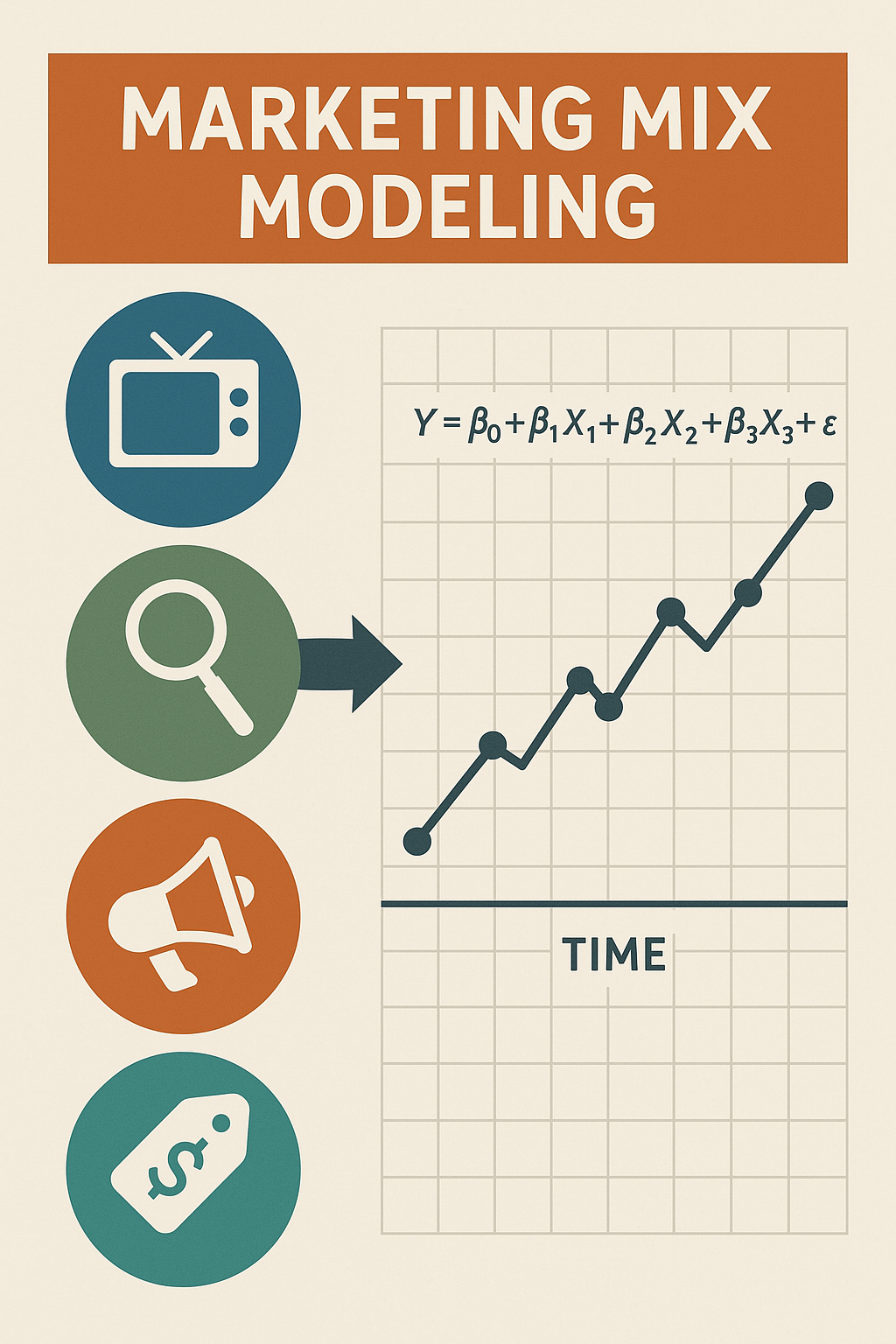In today’s data-driven marketing landscape, businesses continuously seek ways to enhance their marketing effectiveness. Enter Marketing Mix Modeling (MMM), a powerful analytical tool that helps companies understand the impact of various marketing activities and optimize their marketing budgets. In this blog post, we will explore what MMM is, how it is created, and its purpose in navigating the complexities of modern digital marketing.
What is Marketing Mix Modeling (MMM)?
Marketing Mix Modeling (MMM) is a statistical analysis technique used to measure the effectiveness of marketing strategies and the impact of different marketing channels on sales performance. By quantifying the effect of each marketing input—such as television, digital advertising, social media, promotions, and pricing—MMM helps businesses determine how to allocate their marketing budgets most effectively.
Typically, MMM employs historical data to identify patterns and trends, allowing marketers to estimate the contribution of each marketing element to overall sales or revenue. The ultimate goal is to provide critical insights into how different marketing expenditures work together (or against each other) to influence consumer behavior.
How is an MMM Created?
Creating a Marketing Mix Model involves several steps, including:
1. Data Collection: The first step is gathering relevant data. This data can include internal sources, such as sales figures, marketing spend, and promotional activity, as well as external data like competitors’ marketing efforts, economic indicators, and consumer behavior metrics. Digital analytics tools can play a vital role in harvesting data from various online channels.
2. Data Preparation: Once the data is collected, it needs to be cleaned and organized. This may involve dealing with missing values, outlier detection, and merging different data sources. The preparation stage is critical for ensuring the accuracy of the model.
3. Model Development: Using advanced statistical techniques, such as regression analysis, marketers develop mathematical models that represent the relationship between marketing inputs and output (e.g., sales). This step often requires the expertise of data analysts or data scientists familiar with econometric modeling tactics.
4. Analysis and Validation: After creating the model, it’s vital to validate the findings. This involves testing the model with a subset of the data and checking for predictive accuracy. Analysts use various metrics and techniques to ensure that the model is robust and reliable.
5. Insights and Actionable Recommendations: Finally, the findings are translated into actionable insights. This includes identifying which marketing channels are performing well, which need more investment, or how the interdependencies among marketing activities can be optimized.
The Purpose of MMM in the Current Digital Marketing Landscape
With the proliferation of digital marketing channels, the complexity of marketing strategies has increased significantly. MMM serves several important purposes in this dynamic environment:
1. Budget Optimization: One of the foremost benefits of MMM is its ability to inform budget allocation. By understanding which channels yield the highest return on investment (ROI), marketers can allocate funds more effectively, reducing waste and maximizing impact.
2. Performance Measurement: MMM provides clarity on the effectiveness of different marketing strategies. This helps businesses assess performance not just in isolation, but also in relation to overall business goals.
3. Cross-Channel Insights: In the digital age, consumers interact with brands across multiple channels. MMM allows marketers to see how these channels work together, offering insights into how to create an integrated marketing strategy that enhances overall performance.
4. Long-Term Planning: While many digital marketing efforts are focused on short-term gains (like immediate sales or clicks), MMM encourages a longer-term view. By understanding the lasting effects of marketing campaigns on brand equity and customer loyalty, businesses can drive sustained growth.
5. Adapting to Change: As market conditions evolve, so do consumer preferences and behaviors. MMM allows companies to stay agile, as it can be updated with new data to reflect changes in the marketplace or shifts in marketing strategy.
Conclusion
As businesses navigate the complexities and challenges of the digital marketing landscape, Marketing Mix Modeling serves as a vital tool in their arsenal. By enabling marketers to make data-driven decisions, MMM provides insights that foster greater efficiency and effectiveness within their marketing strategies. In an age where consumer preferences shift rapidly and competition is fierce, understanding the impact of your marketing mix might just be the edge your business needs to thrive.
Embarking on the journey of MMM could lead to transformative insights that empower your marketing efforts and drive business success. Whether you’re a seasoned marketer or a business owner just starting your journey, considering MMM as part of your strategy can ensure that every marketing dollar is spent wisely, paving the way for future growth and sustainability.

